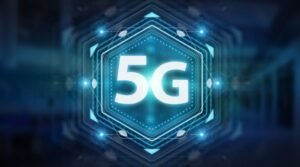The communication industry surrounded by the 5G technology buzz taking over the next generation of connectivity and services. After years of tests and experiments and research, finally, 5G is set to make a lasting impact. The fifth generation of telecommunication systems, 5G, is scheduled to be set to launch on a larger scale in 2020. But you might be thinking, what exactly is 5G and how it will change our lives?

So, What’s 5G?
5G networks represent the new generation of mobile Internet connectivity. The fifth-generation connectivity will strive to offer ultra-high bandwidth as well as more reliable connections with smartphones and other devices. Predicted to be at least 100 times and as high as 1,000 times faster than 4G, allowing high-resolution movies to be downloaded in mere seconds.
5G will elevate the mobile networks to not only connecting people but also interconnect and control machines, objects, and devices. A new level of performance and efficiency will empower the user experience and connect new industries. It will also deliver multi-Gbps peak rates, ultra-low latency, massive capacity, and a more consistent user experience. You might be wondering what advantages it will bring!
Advantages 5G will bring?
A fifth-generation (5G) is designed for a world where billions and billions of people are dependent on a constant internet connection. The first mobile phones that support the 5G network have been already available in parts of Europe since September 2019, with many other countries launching new models.
5G’s speed and low latency connectivity will allow the devices to process a very high volume of data messages with minimal delay. It will also boost artificial intelligence as well as cloud computing. Over a period of time since the launch, the entire economic activity will be influenced by the new 5G infrastructures and accelerating the digital transformation.
Imagine driverless trucks and cars, smart buildings, and cities with remote medical interventions will be in reality because of 5G. 5G is not a modified version of 4G, but an entirely new network infrastructure is holding the potential to revolutionize the way the mobile network functions.
The major benefits include:
- Faster Speed: Data transfer speeds projected to be about ten times higher with 5G than the possible 4G. Meaning, faster transmission of images and videos. With 4G/LTE, downloading a high-definition movie takes 10 minutes, but with 5G, it shall take less than a second.
- Shorter Delays: There is often a brief lag time from when data is sent to when it’s received. 5G should reduce this so-called latency, making it possible to watch the high-speed virtual reality video with no delays or glitches.
- Increased Connectivity: The cell towers equipped with 5G technology would have greatly increased capacity over 4G/LTE. Meaning more people, more devices, shall be able to communicate at the same time.
Each new generation of wireless technology has brought faster, more reliable cellular and internet connections. With the release of 5G connectivity, mobile apps will not only function more efficiently but will be better for technologies like augmented and virtual reality. 5G will also enable developers to integrate other technologies into apps more efficiently. With placing the app’s data within the cloud, users can access and run apps without having to install them on devices physically.
The increased network speeds and the ability to handle more data will enable mobile apps to download over a cellular network fast than being required to download over a Wi-Fi network. While 5G offers opportunities and new features, it will be existing 3G and 4G/LTE technology that will drive IoT, IIoT, and Industry 4.0 solutions in the coming year. LTE-M and NB-IoT support are available with modems that handle multiple protocols.

How Fast is 5G?
Per IMT-2020 requirements, 5G is expected to deliver peak data rates up to 20 Gbps. Qualcomm Technologies first 5G NR modem, then Qualcomm ‘Snapdragon’ X50 5G modem, designed to achieve up to 5 Gbps in downlink peak data rate.
5G is more than about just how ‘fast’ it is. In addition to higher peak data rates, it will also provide more network capacity by expanding into a new spectrum. The latest 5G NR (new radio) mobile network will be backed up by the GigabitLTE coverage foundation, which will provide incredible connectivity.
Following is the difference between 4G and 5G:
- 5G is a unified platform that is more capable than 4G
- 5G uses spectrum better than 4G
- 5G is faster than 4G
- 5G has more capacity than 4G
To support the next generation of the mobile app on device, 5G and its promise of higher data transfer speeds, lower latency, and increased connection density will be the only to provide users with incredible user experiences. As the 5G network launches begin to accelerate, opportunities for an emerging market is necessary to facilitate the data-intensive environment of 5G.
“STAY UPDATED. STAY PROTECTED!“



